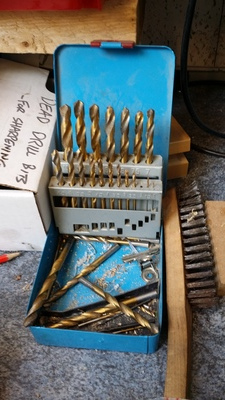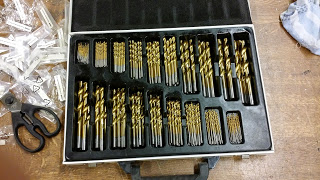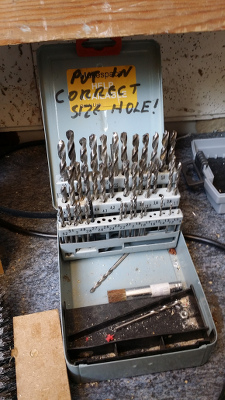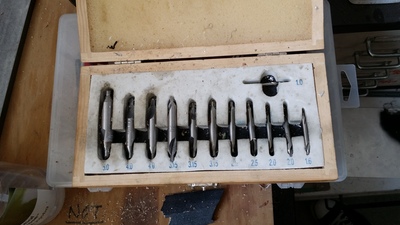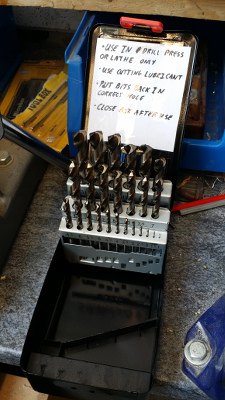Drilling
Makespace has several sets of drill bits for different purposes:
- General purpose bits These have a yellow coating, come in 0.5mm increments, are are kept in a box near the drill presses.
- 0.1mm bits These are dark grey, come in 0.1mm increments, and are also kept near the drill presses.
- Centre bits Short, grey bits used to drill a starting hole. Kept in a wooden box near the lathe.
- Cobalt bits Grey, kept in a black box (FIXME - where?). Intended for drilling steel. Expensive, use only if you're confident that you know what you're doing. Do not use these in a handheld drill - use only in the lathe, mill, or drill press.
Checklist for drilling:
- Are you using the correct size of bit from the cheapest appropriate set of bits (see descriptions below)?
- Have you set the speed correctly from your material and the drill diameter?
- Are you using cutting lubricant for drilling metal?
- Are you putting it back in the correct place?
Remember: breaking a bit is forgiveable, but 'fess up and report it on the google group.
Contents
General purpose bits
These can be reordered here.
These bits are suitable for most drilling tasks, but may fail to get through steel.
Replacements are kept in a white box in the drawer labelled 'replacement bits'.
0.1 mm increment bits
Do you know where these were ordered from? If so, please edit this page.
These bits are useful when you need to drill a hole of a diameter than is not a multiple of 0.5mm, but we do not have replacements so please use them sparingly, and drill out a hole of a smaller diameter using a 0.5mm bit first.
For example, if I want to drill a hole of 8.2mm diameter, I would do the following:
- Use a centre bit to drill a shallow hole.
- Drill with a 5mm bit from the general purpose bits.
- Drill with a 8mm bit from the general purpose bits.
- Finally drill with the 8.2mm bit.
Check that the bit you have taken out really is the correct size (it may be printed on the shank, otherwise use callipers to check), only take one at a time out, and make sure you replace it in the correct hole.
Centre bits
These short, fat bits are much more resistant to deflection, so tend to put your hole in the right place. They can be delicate, and some of Makespace's set have had their fluted tip broken off. Please don't use a bit that is much smaller than the first 'full length' bit you're going to drill with.
Cobalt bits
These can be reordered here.
These drill bits are harder, making them more able to drill steel without being damaged. However, there are very expensive. Please think carefully before attempting to drill with these Have you:
- Mounted the bit in either a drill press or the lathe tailstock, or in the mill? (Do not use these bits in a handheld drill!)
- Applied cutting lubricant?
- Set the speed of the drill press, lathe, or mill appropriately?
If in doubt, ask for help!
Cutting lubricant
When cutting metal, a cutting lubricant will usually give a better, more accurate, surface finish, and will protect the tool from damage.
For steel, we have a lubricant called Molyslip. You can buy more at Mackays. It lives in a plastic bottle, often near the metal mill.
For aluminium, we do not have any dedicated cutting lubricant. These are often paraffin wax based. If you want to do some research and order some (and write about it here), that would be great! In the mean time, Boots plain lip balm seems to improve the cutting somewhat.
